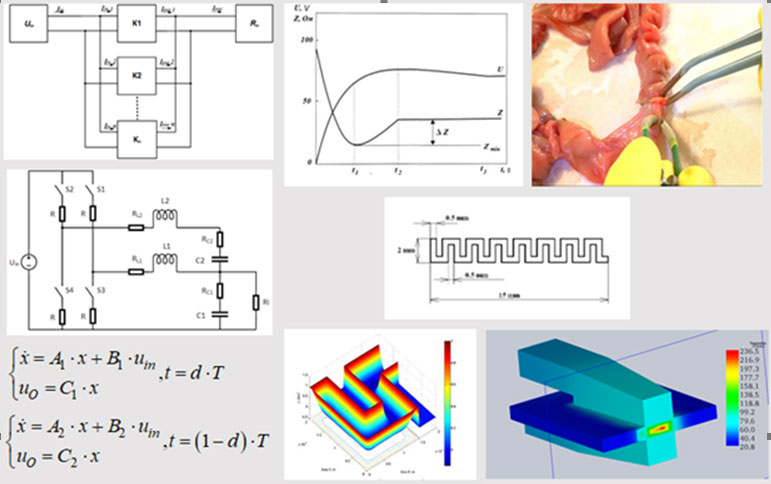Scientific and technical principles of creating devices for contact welding of biological tissues by DC pulses
According to the results of research work, the conditions for obtaining high-quality compounds in the process of contact welding of biological tissues with electrical pulses are determined. The dependences of the quality indicators of welded joints on the used form of welding pulses, which is characterized by the law of change of current (or power), amplitude and duration, are analyzed. The principles of coordination of electric parameters of welding pulses with electrophysical and electrochemical processes in loading are formulated, establishing regularities between change of parameters of the used pulses and cellular processes in biological fabrics. Recommendations for the choice of modes of contact welding of soft biological tissues depending on the specific welding conditions and medical and technical requirements for such equipment have been developed. Regularities of current distribution in medical instruments for welding of biological tissues are established and their new constructions are developed. New and improved control methods and algorithms for contact welding of soft biological tissues are proposed, which provide high accuracy of welding pulse formation and are based on the use of several control channels for the most important parameters, such as changing electrical resistance and geometry of welded biological tissues, power of welding current in contact and others. Efficient and flexible modular circuit topologies for construction of basic units of welding devices and their mathematical models are offered. Electromagnetic processes are studied and conditions of stability of converters, and also rational parameters for its maintenance are defined. As a result of research work, two dissertations for the degree of PhD were defended and one doctoral dissertation was prepared for defense. The results of research work are used in the educational process of the Department of Electronic Devices and Systems and the Department of Biomedical Engineering.

| Attachment | Size |
|---|---|
| 255.61 KB |




